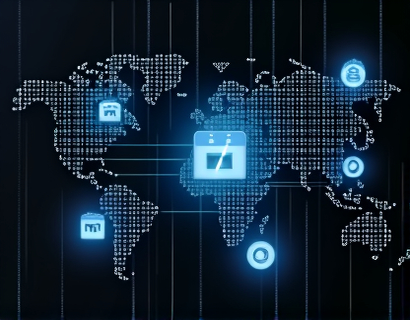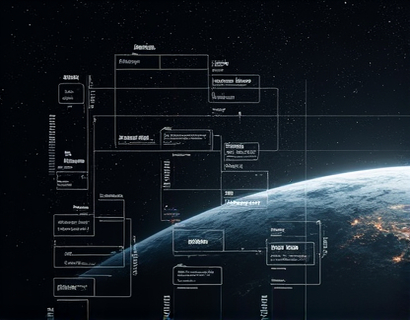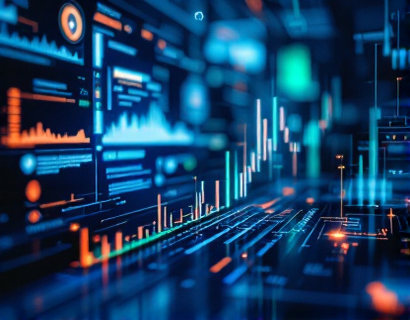Empowering Agriculture: Cutting-Edge Software Solutions for Enhanced Efficiency and Productivity
The agricultural sector, a cornerstone of global economies and food security, is undergoing a transformative period driven by technological advancements. Innovative software solutions, often collectively referred to as AgriTech, are revolutionizing the way farmers, agricultural businesses, and professionals operate. These cutting-edge tools are not only enhancing efficiency and productivity but also providing strategic decision support, enabling the sector to meet the growing demand for food in a sustainable manner.
Advanced Data Management
One of the primary ways software is impacting agriculture is through advanced data management. Modern agricultural software platforms offer robust solutions for collecting, storing, and analyzing vast amounts of data. This includes weather patterns, soil conditions, crop health, and market trends. By centralizing and structuring this data, farmers and agricultural businesses can gain valuable insights that were previously unattainable. For instance, precision agriculture technologies use GPS and sensor data to monitor and manage fields with high precision, optimizing resource use and increasing yields.
Data management systems also facilitate better record-keeping and compliance with regulatory requirements. Automated tracking of crop rotations, pesticide applications, and irrigation schedules ensures that all necessary documentation is up-to-date and accurate. This not only saves time but also reduces the risk of errors and non-compliance, which can lead to penalties and reputational damage.
Strategic Decision Support
Beyond data management, AgriTech solutions provide strategic decision support, empowering agricultural professionals to make informed choices. Decision support systems (DSS) integrate various data sources and use advanced analytics to offer recommendations. For example, a DSS might analyze historical weather data, current soil moisture levels, and crop growth stages to suggest the optimal time for planting or harvesting. This level of precision helps farmers maximize their yields while minimizing resource waste.
Another critical area is market analysis. Software solutions can track market trends, price fluctuations, and consumer demand, enabling farmers to make strategic decisions about what crops to plant and when to sell their produce. This market insight is particularly valuable for small-scale farmers who may lack the resources to conduct extensive market research on their own.
Automation and Robotics
Automation and robotics are playing an increasingly significant role in modern agriculture. Autonomous tractors and drones equipped with sensors and cameras can perform tasks such as planting, spraying, and monitoring crops with minimal human intervention. These technologies not only reduce labor costs but also improve the accuracy and consistency of agricultural operations. For instance, drones can quickly survey large areas to identify issues like pest infestations or nutrient deficiencies, allowing for timely and targeted interventions.
Robotic systems are also being used for harvesting, significantly reducing the time and labor required for this critical process. Automated harvesting robots can work around the clock, ensuring that crops are picked at the optimal time and in the best condition. This not only increases efficiency but also helps in reducing post-harvest losses.
IoT and Sensor Technology
The Internet of Things (IoT) is another key driver of innovation in agriculture. IoT devices, such as soil moisture sensors, weather stations, and animal health monitors, collect real-time data that can be transmitted to a central system for analysis. This continuous flow of information allows for proactive management of agricultural operations. For example, soil moisture sensors can trigger irrigation systems when levels fall below a certain threshold, ensuring that crops receive the right amount of water without over-irrigation.
Livestock monitoring systems use wearable devices to track the health and behavior of animals, alerting farmers to potential health issues before they become critical. This not only improves animal welfare but also enhances productivity by ensuring that animals are healthy and productive.
Sustainability and Environmental Impact
The environmental impact of agriculture is a growing concern, and software solutions are playing a crucial role in promoting sustainable practices. By optimizing resource use, such as water and fertilizers, these technologies help reduce the ecological footprint of farming. Precision agriculture, for instance, ensures that inputs are used only where and when they are needed, minimizing waste and environmental pollution.
Additionally, software can assist in carbon footprint management by tracking and analyzing emissions from various agricultural activities. This data can be used to implement strategies that reduce greenhouse gas emissions, contributing to global efforts to combat climate change. Sustainable farming practices not only benefit the environment but also appeal to consumers who are increasingly conscious of the environmental impact of their food choices.
Challenges and Considerations
While the benefits of AgriTech are substantial, there are challenges that need to be addressed. One of the primary concerns is the digital divide, where small-scale and resource-limited farmers may lack access to these advanced technologies. To bridge this gap, initiatives focused on affordable and accessible technology solutions are essential. Governments and organizations can play a role by providing subsidies, training programs, and infrastructure support to ensure that all farmers can benefit from technological advancements.
Data security and privacy are also critical considerations. As more data is collected and stored, the risk of data breaches and misuse increases. Agricultural software providers must implement robust security measures to protect sensitive information. Transparency and compliance with data protection regulations are paramount to building trust among users.
Future Trends and Innovations
The future of AgriTech holds even more promise, with several emerging trends and innovations on the horizon. Artificial Intelligence (AI) and machine learning are set to play a more significant role in agriculture, enabling more sophisticated predictive analytics and autonomous decision-making. AI can analyze complex data sets to identify patterns and make predictions with high accuracy, further enhancing the efficiency and productivity of agricultural operations.
Blockchain technology is another area with potential applications in agriculture. By providing a secure and transparent way to track the origin and journey of food products, blockchain can enhance food safety and traceability. This can be particularly valuable in addressing consumer concerns about food authenticity and quality.
Furthermore, the integration of virtual and augmented reality (VR/AR) in agricultural training and operations is an exciting frontier. VR can simulate farming scenarios for training purposes, while AR can provide real-time guidance and information to farmers in the field. These technologies can improve training effectiveness and operational efficiency.
Conclusion
The integration of cutting-edge software solutions in agriculture is transforming the sector in profound ways. From advanced data management and strategic decision support to automation, IoT, and sustainability initiatives, these technologies are enhancing efficiency, productivity, and sustainability. As the agricultural industry continues to evolve, embracing these innovations will be crucial for staying competitive and meeting the global demand for food. By leveraging AgriTech, farmers and agricultural businesses can not only improve their operations but also contribute to a more sustainable and resilient food system.










































